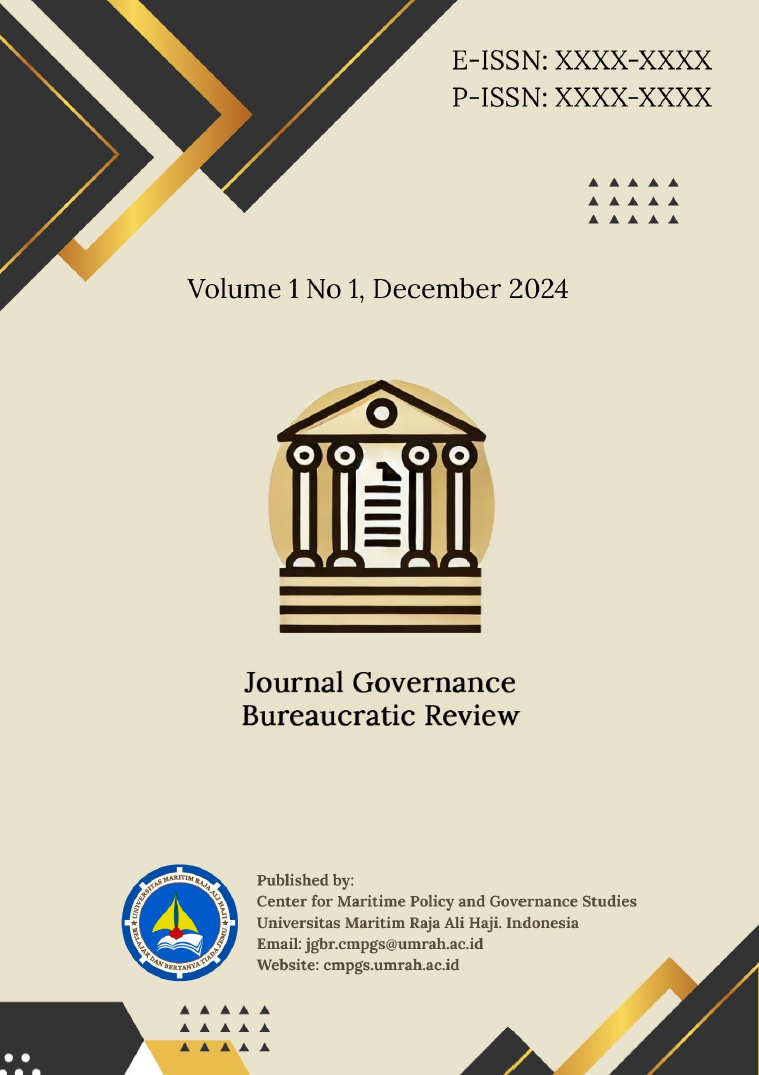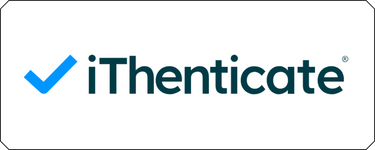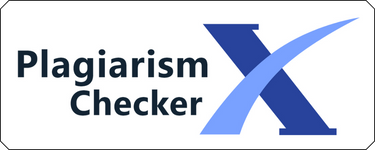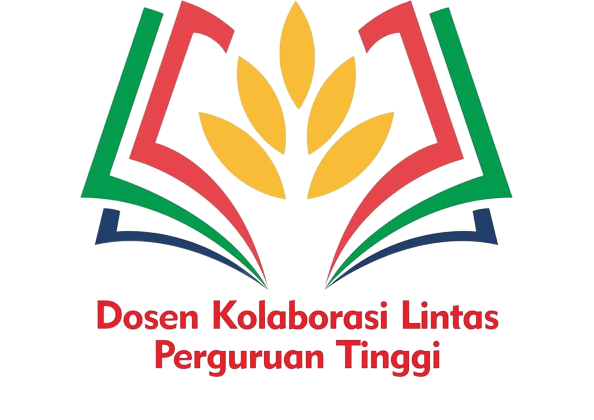SWOT Analysis in Performance Accountability of the Yogyakarta City Human Resources Development and Personnel Agency
DOI:
https://doi.org/10.31629/jgbr.v1i1.7353Keywords:
SWOT, Performance, Human ResourcesAbstract
The increasing demand for effective governance in public sector institutions necessitates high standards of performance accountability. In this context, the Human Resources Development and Personnel Agency (BKPSDM) of Yogyakarta City plays a crucial role in ensuring the effectiveness and efficiency of civil service management. This study was initiated to examine the performance accountability of BKPSDM Yogyakarta City through a SWOT (Strengths, Weaknesses, Opportunities, and Threats) analysis, aiming to provide strategic insights for enhancing institutional performance. The primary objective of this research is to identify internal and external factors influencing the performance accountability of the agency and to formulate strategic recommendations based on these findings. The study employed a qualitative-descriptive approach, using documentation methods and SWOT analysis techniques to evaluate the agency’s internal capabilities and external environment. Data were sourced from the agency’s 2024 Government Agency Performance Accountability Report (LAKIP), complemented by policy documents and strategic plans. The findings highlight several strengths, including structured performance planning and consistent implementation of human resource development programs. However, weaknesses were identified, such as suboptimal coordination across units and limited innovation in service delivery. Externally, the agency has opportunities stemming from regulatory support and digital transformation trends, but also faces threats such as budgetary constraints and rapidly changing policy demands. In conclusion, the SWOT analysis provides a comprehensive understanding of the agency’s performance accountability landscape. The results can guide strategic decision-making and the formulation of performance improvement initiatives, contributing to the agency’s long-term effectiveness and public service quality.
Downloads
References
Alarcon, G. M., & Jessup, S. A. (2023). Propensity to trust and risk aversion: Differential roles in the trust process. Journal of Research in Personality, 103, 104349. https://doi.org/10.1016/j.jrp.2023.104349
Artz, M., Homburg, C., & Rajab, T. (2012). Performance-measurement system design and functional strategic decision influence: The role of performance-measure properties. Accounting, Organizations and Society, 37(7), 445–460. https://doi.org/10.1016/j.aos.2012.07.001
Ashok, M., Dhaheri, M. S. M. A. B., Madan, R., & Dzandu, M. D. (2021). How to counter organisational inertia to enable knowledge management practices adoption in public sector organisations. Journal of Knowledge Management, 25(9), 2245–2273. https://doi.org/10.1108/JKM-09-2020-0700/FULL/XML
Botelho, F. H. F. (2021). Accessibility to digital technology: Virtual barriers, real opportunities. Assistive Technology, 33(sup1), 27–34. https://doi.org/10.1080/10400435.2021.1945705
Brignall, S., & Modell, S. (2000). An institutional perspective on performance measurement and management in the ‘new public sector.’ Management Accounting Research, 11(3), 281–306. https://doi.org/10.1006/mare.2000.0136
Christodoulou, A., & Cullinane, K. (2019). Identifying the Main Opportunities and Challenges from the Implementation of a Port Energy Management System: A SWOT/PESTLE Analysis. Sustainability 2019, Vol. 11, Page 6046, 11(21), 6046. https://doi.org/10.3390/SU11216046
Coast, J., & Jackson, L. (2017). Understanding primary data qualitative. In Qualitative Methods for Health Economics. Bloomsbury Publishing.
Coman, A., & Ronen, B. (2009). Focused SWOT: Diagnosing critical strengths and weaknesses. International Journal of Production Research, 47(20), 5677–5689. https://doi.org/10.1080/00207540802146130
Cordery, C., Goncharenko, G., Polzer, T., McConville, D., & Belal, A. (2023). NGOs’ performance, governance, and accountability in the era of digital transformation. The British Accounting Review, 55(5), 101239. https://doi.org/10.1016/J.BAR.2023.101239
Dasgupta, A., Gill, A., & Hussain, F. (2019). A conceptual framework for data governance in IoT-enabled digital IS ecosystems. DATA 2019 - Proceedings of the 8th International Conference on Data Science, Technology and Applications, 209–216. https://doi.org/10.5220/0007924302090216
Downe, J., Grace, C., Martin, S., & Nutley, S. (2010). Theories of public service improvement: A comparative analysis of local performance assessment frameworks. Public Management Review, 12(5), 663–678. https://doi.org/10.1080/14719031003633201
Eldridge, C., & Palmer, N. (2009). Performance-based payment: Some reflections on the discourse, evidence and unanswered questions. Health Policy and Planning, 24(3), 160–166. https://doi.org/10.1093/HEAPOL/CZP002
Gurel, E. (2017). SWOT Analysis: A Theoretical Review. Journal of International Social Research, 10(51), 994–1006. https://doi.org/10.17719/JISR.2017.1832
Heumann, B. W. (2011). Satellite remote sensing of mangrove forests: Recent advances and future opportunities. Progress in Physical Geography, 35(1), 87–108. https://doi.org/10.1177/0309133310385371
Hong, S., Ji, S., Kim, B. J., & Park, H. J. (2024). Performance feedback in healthcare organizations: The role of accountability measures and competition. Social Science & Medicine, 361, 117362. https://doi.org/10.1016/J.SOCSCIMED.2024.117362
Huang, Y. H. C., Lu, Y., Choy, C. H. Y., Kao, L., & Chang, Y. tzung. (2020). How responsiveness works in mainland China: Effects on institutional trust and political participation. Public Relations Review, 46(1), 101855. https://doi.org/10.1016/j.pubrev.2019.101855
Johnston, M. P. (2014). Secondary Data Analysis: A Method of which the Time Has Come. Qualitative and Quantitative Methods in Libraries, 3(3), 619–626. https://www.qqml-journal.net/index.php/qqml/article/view/169
Labolo, M., & Indrayani, E. (2017). Bureaucratic Reform and the Challenge of Good Governance Implementation in Indonesia. Journal Of Asian Review Of Public Affair And Policy, 2(4), 25–47.
Leigh, D. (2010). SWOT Analysis. Handbook of Improving Performance in the Workplace, 2, 115–140. https://doi.org/10.1002/9780470592663.CH24
Longsheng, C., Ali Shah, S. A., Solangi, Y. A., Ahmed, M., & Ali, S. (2022). An integrated SWOT-multi-criteria analysis of implementing sustainable waste-to-energy in Pakistan. Renewable Energy, 195, 1438–1453. https://doi.org/10.1016/j.renene.2022.06.112
Morgan, N. A., Jayachandran, S., Hulland, J., Kumar, B., Katsikeas, C., & Somosi, A. (2022). Marketing performance assessment and accountability: Process and outcomes. International Journal of Research in Marketing, 39(2), 462–481. https://doi.org/10.1016/J.IJRESMAR.2021.10.008
Nofianti, L., & Suseno, N. S. (2014). Factors Affecting Implementation of Good Government Governance (GGG) and their Implications towards Performance Accountability. Procedia - Social and Behavioral Sciences, 164, 98–105. https://doi.org/10.1016/J.SBSPRO.2014.11.056
Poniatowicz, M., Dziemianowicz, R., & Kargol-Wasiluk, A. (2020). Good governance and institutional quality of public sector : theoretical and empirical implications. European Research Studies Journal, XXIII(2), 529–556. https://www.um.edu.mt/library/oar/handle/123456789/57528
Puyt, R. W., Lie, F. B., & Wilderom, C. P. M. (2023). The origins of SWOT analysis. Long Range Planning, 56(3). https://doi.org/10.1016/j.lrp.2023.102304
Riwukore, J. R., Habaora, F., & Terttiaavini, T. (2022). Good Governance Dalam Mengukur Kinerja Lembaga Negara. Jurnal Pemerintahan Dan Politik, 7(1). https://doi.org/10.36982/JPG.V7I1.1974
Saliterer, I., & Korac, S. (2013). Performance information use by politicians and public managers for internal control and external accountability purposes. Critical Perspectives on Accounting, 24(7–8), 502–517. https://doi.org/10.1016/j.cpa.2013.08.001
Sigalas, C. (2015). Competitive advantage: the known unknown concept. Management Decision, 53(9), 2004–2016. https://doi.org/10.1108/MD-05-2015-0185
Spatola, N. (2024). The efficiency-accountability tradeoff in AI integration: Effects on human performance and over-reliance. Computers in Human Behavior: Artificial Humans, 2(2), 100099. https://doi.org/10.1016/J.CHBAH.2024.100099
Stål, H. I. (2015). Inertia and change related to sustainability: An institutional approach. Journal of Cleaner Production, 99, 354–365. https://doi.org/10.1016/J.JCLEPRO.2015.02.035
Zhang, L., Jiang, P., Zhang, Y., Fan, Y. Van, & Geng, Y. (2024). Recycling impacts of renewable energy generation-related rare earth resources: A SWOT-based strategical analysis. Energy, 312, 133624. https://doi.org/10.1016/J.ENERGY.2024.133624
Downloads
Published
Issue
Section
License
Copyright (c) 2024 Mahadiansar Mahadiansar

This work is licensed under a Creative Commons Attribution-ShareAlike 4.0 International License.
You are free to:
- Share — copy and redistribute the material in any medium or format for any purpose, even commercially.
- Adapt — remix, transform, and build upon the material for any purpose, even commercially.
- The licensor cannot revoke these freedoms as long as you follow the license terms.
Under the following terms:
- Attribution — You must give appropriate credit, provide a link to the license, and indicate if changes were made . You may do so in any reasonable manner, but not in any way that suggests the licensor endorses you or your use.
- ShareAlike — If you remix, transform, or build upon the material, you must distribute your contributions under the same license as the original.
- No additional restrictions — You may not apply legal terms or technological measures that legally restrict others from doing anything the license permits.













